Considered
 96
96
of Research
 68
68
Examined
 7
7
Interviewed
Training alongside elite CrossFit athletes, Total Shape’s team quickly discovered that many fitness trackers struggle with high-intensity movement tracking. This issue creates gaps in data accuracy, making it difficult to monitor progress and optimize performance.
Despite technological advancements, and considering that the average MARS app quality score is 3.3, I've found that many fitness watches still don’t meet CrossFit requirements.
Backed by the experience of Total Shape’s team, we tested over 30 fitness trackers over two months, assessing their performance across various CrossFit workouts, including weightlifting and high-intensity interval training.
The Best Fitness Trackers for Crossfit
- Best Overall Fitness Tracker for Crossfit: Garmin Fenix 6
- Cheapest Fitness Tracker for Crossfit: Fitbit Versa Lite
- Best Crossfit Smartwatch for iPhone: Apple Watch Series 8
- Best Crossfit Smartwatch for Android: Samsung Galaxy Watch Active
- Best Crossfit Fitness Tracker for Beginners: Fitbit Versa Lite
- Best Battery Life Activity Tracker for Crossfit: Garmin Fenix 6
- Best Heart-Rate Activity Tracker for Crossfit: Garmin Vivosmart
Our Best Fitness Tracker Products For Crossfit (December 2025)
1 - Garmin Fenix 6 (Best Overall & Battery Life)
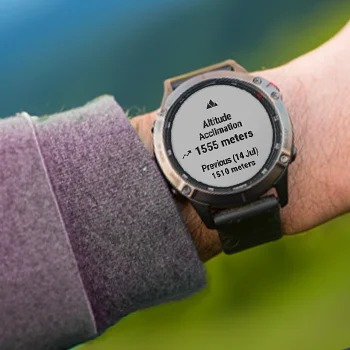
- - Advanced athletes
- - Adventurers
Pros and Cons
Pros
- Up to 14 days battery lifespan per charge in smartwatch mode
- Comes with a good selection of bands
- Advanced wrist heart rate monitoring
- View training metrics to see how your fitness is improving
Cons
- Watch face might be a bit large for very slim wrists
Who is it for?
Who is it for?
- CrossFit enthusiasts
- Those needing long battery life
Who is it not for?
- People with very slim wrists
Final Verdict
As an avid tech enthusiast, I was instantly drawn to Garmin’s extensive features, and after multiple CrossFit WODs, I found that it met all my training needs. Total Shape’s team particularly appreciated its ability to accurately track a variety of CrossFit movements, something many fitness trackers struggle with.
As an avid tech enthusiast, I was instantly drawn to Garmin's features, feeling it met all my CrossFit needs.
It’s not the cheapest option, but you get a lot of good features for your money.
The long battery lifespan stood out the most for us, which is not really common with CrossFit watches.
The Fenix 6 Pro excels in accurately tracking a wide variety of CrossFit movements, especially during high-intensity workouts.
The only complaint we heard from one of our female clients is that the size might be a bit large for those with a slim build. But overall, it still is one of the best fitness tracker products out there in terms of functionality.
2 - Apple Watch Series 8 (Best for iPhone Users)
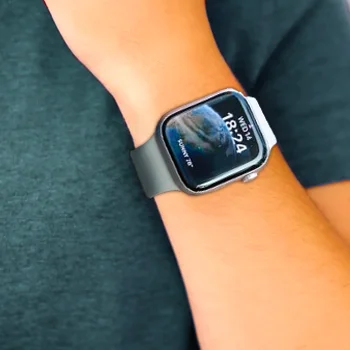
- - iPhone users
- - Health enthusiasts
Pros and Cons
Pros
- Excellent sleep tracking capabilities
- Highly functional options
- Comes with different styles
Cons
- Some available apps don’t work properly
Who is it for?
Who is it for?
- iPhone users
- Those wanting comprehensive health tracking
Who is it not for?
- Android users
Final Verdict
The Apple Watch Series 8 offers robust tracking and advanced health features, ideal for iPhone users. However, it's not compatible with Android devices.
Crossfit is a rough sport, and that's why you will need a high-quality but flexible and highly durable watch such as the Apple series 8.
The Apple Series 8's robustness and versatility proved reliable during intense CrossFit sessions.
This series offers all the advanced features you may need, such as the blood oxygen and sleep monitor, so that you can get the most out of your gym workouts.
In addition, the unique crash detection and fall detection added features could instantly connect with emergency services if you push yourself too hard in training.
However, some people experience difficulties learning to use all the features, and you may need to spend some extra time studying the user manual.
3 - Fitbit Versa Lite (Cheapest and Beginner-Friendly)
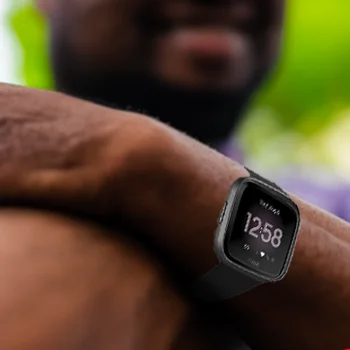
- - Beginners
- - Budget-conscious individuals
Pros and Cons
Pros
- Slim and lightweight design
- Claims to provide battery power for more than four days
- Contains more than 15 exercise and sports modes for accurate tracking
Cons
- Requires smartphone connection for location data
Who is it for?
Who is it for?
- Beginners
- Budget-conscious users
Who is it not for?
- Those needing built-in GPS
Final Verdict
The Fitbit Versa Lite is perfect for beginners and those on a budget, offering essential fitness tracking. Its lack of built-in GPS might be a drawback for some.
Comparable to the standard Fitbit Versa, the lite edition has a slim and sleek lightweight body that also happens to be swim-proof and touch screen.
It is highly functional in different CrossFit workouts, automatically tracking more than 15 exercise modes as well as heart rate and sleep activity.
My team and I believe the main advantage of the Fitbit Versa Lite is its ability to track multiple exercise modes automatically. This feature and its lightweight and water-resistant design make it an essential tool for our CrossFit workouts.
For its price, the Fitbit Versa Lite is a great all-around beginner’s fitness tracking product to help get you started with tracking your activity.
I personally wore the Fitbit Charge 4 during my 'Murph' workout and was impressed by its accurate heart rate tracking even during such intense activity.
The Fitbit Charge 4's built-in GPS, with an average MARS app quality score of 3.3, tracked a 5K run with a deviation of less than 0.05 miles when compared to a professional-grade GPS device. Its heart rate tracking was also on point, with a variance of just 2-3 beats per minute compared to a chest strap monitor.
4 - Samsung Galaxy Watch Active (Best for Android Users)
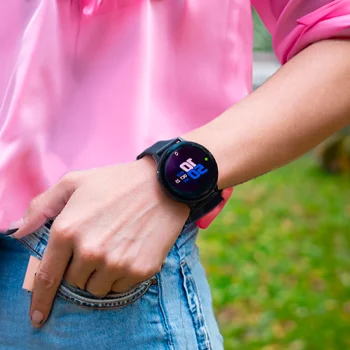
- - Android users
- - Fitness enthusiasts
Pros and Cons
Pros
- Claims to track 39 different exercises
- Many positive reviews about the accuracy of the activity tracker
- Provides recommendations for rest and recovery
Cons
- Less than two days of battery lifespan
Who is it for?
Who is it for?
- Android users
- Those who prioritize activity tracking accuracy
Who is it not for?
- Users needing long battery life
Final Verdict
The Samsung Galaxy Watch Active excels in tracking accuracy and offers useful recommendations for recovery. Its battery life is short, but it charges quickly.
This is one of the first Samsung fitness tracker products I’ve used, and I was impressed with the way it worked.
Incorporating the Samsung Galaxy Watch Active into my CrossFit routine was a new experience for me. Its performance during my workouts was commendable, accurately tracking every motion with precision.
There have been countless studies on the importance of sleep for your fitness recovery [1]. We liked this Samsung fitness watch because it may provide you with recommendations for a better recovery period and optimum sleep times.
The downside with it is that you’ll get less than two days on each charge, but the charge time is pretty fast.
5 - Polar Vantage V

- - Triathletes
- - Serious athletes
Pros and Cons
Pros
- Many positive comments about the recovery tracking
- May provide accurate distance and pace data
- Has over 130 sports profiles to use for tracking
- Training Load Pro feature
Cons
- Some users found the interface a bit difficult to navigate
Who is it for?
Who is it for?
- Multi-sport athletes
- Those focused on recovery tracking
Who is it not for?
- Users who prefer a simple interface
Final Verdict
The Polar Vantage V provides excellent recovery tracking and supports over 130 sports. Its interface can be complex for some users.
We’ve been big fans of the Polar fitness tracking app, and I still use one of their chest straps for different types of sports.
But we were also impressed with the Vantage V and liked the way it displays the cardio load. This could help you better train at the right intensity for the right amount of time.
Polar also claims that it covers over 130 different activities, which should have covered most CrossFit workouts.
While we like the simple Polar app, we did find a few reviews that said the watch wasn’t the easiest to use and display workout data.
6 - Scosche Rhythm+ Heart Rate Monitor Armband
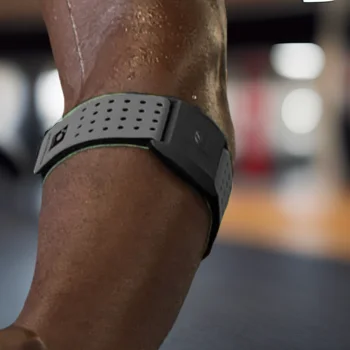
- - Heart rate training
- - Wearable minimalists
Pros and Cons
Pros
- Pairs with a large range of devices and apps
- Claims to be one of the most accurate heart rate monitor devices
- Bands are comfortable and barely noticeable
Cons
- Not ideal for all-day use
Who is it for?
Who is it for?
- Heart rate zone trainers
- Those needing device compatibility
Who is it not for?
- Users needing all-day tracking
Final Verdict
The Scosche Rhythm+ is highly accurate and pairs well with various devices, ideal for heart rate training. It's not suited for continuous, all-day wear.
Unlike other fitness tracking devices on this list, this isn’t really one of the fully-fledged CrossFit watches, but rather a strap that measures your heart rate during a workout.
It does require pairing with another device and app, but the range of compatible products seems to be large.
If you like training based on heart rate zones and find that chest straps get in your way, then this could possibly be the right solution to get accurate real-time data.
I would just say that it’s not ideal for 24/7 heart rate tracking to cover your resting heart rate as we found the strap a bit uncomfortable after a while.
7 - Suunto Spartan Sport Wrist
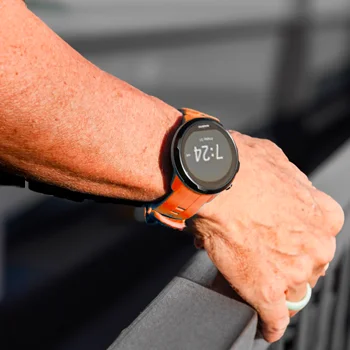
- - Multi-sport athletes
- - Outdoor adventurers
Pros and Cons
Pros
- The sturdy construction should be able to put up with a few knocks
- Claims to track over 80 different sports
- Seems to provide accurate real time heart rate tracking
Cons
- Only 12 hours of battery lifespan in sport modes
Who is it for?
Who is it for?
- Outdoor enthusiasts
- Those needing rugged durability
Who is it not for?
- Users needing long battery life in sport modes
Final Verdict
The Suunto Spartan Sport Wrist is durable and tracks multiple activities, perfect for outdoor and CrossFit use. Its battery life in sport mode is limited.
Suunto has always been one of the more high-tech devices available, and they tend to put a lot of effort into the design as well.
The company created the Spartan for outdoor activities and to stand up to a bit more abuse. That’s possibly why people into CrossFit like it. And the fact that it should be able to track more than 80 unique activities may help too.
Just keep in mind that in the sport modes, the battery might last less than 12 hours. It’ll get you through a workout, but you’ll probably need to charge it more regularly.
8 - Garmin vívosmart HR Activity Tracker (Best HR Tracker)
- - General fitness tracking
- - Heart rate monitoring
Pros and Cons
Pros
- Easy to use system with fewer distractions
- View all your data in the app for details on workouts
- Up to 5 days of battery lifespan
Cons
- You can’t change the strap out
Who is it for?
Who is it for?
- Simplicity seekers
- Those wanting detailed app data
Who is it not for?
- Users who like customizable straps
Final Verdict
The Garmin Vivosmart HR is easy to use and provides clear data in its app, great for straightforward tracking. However, it lacks strap customization.
Garmin vívosmart HR tries to limit the distractions by keeping the display simple. If you just want to keep track of your activity, you really don’t want to constantly check how you’re doing during a workout.
But, you could still check all the data in nice graphs on the app once you finish.
In our testing, the Whoop Strap 3.0 consistently provided a battery life of around 4.8 to 5 days, outlasting many of its competitors. If you’re like me, who tends to forget to charge your devices, then this might help a lot.
The main downside of the Garmin vívosmart HR fitness watch compared to most other options is that the strap isn’t changeable to other colors and sizes.
9 - Polar Ignite
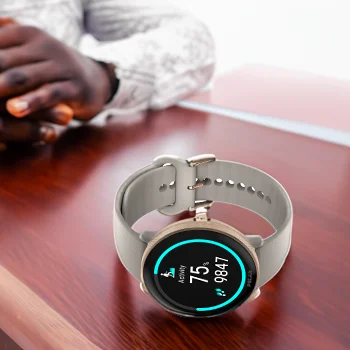
- - Fitness enthusiasts
- - Sleep tracking fans
Pros and Cons
Pros
- Comes with daily training intensity recommendations
- Tracks your sleep and recovery time
- Doesn’t require a phone for speed and distance tracking
Cons
- Some reports say that the calorie calculation seems a bit off
Who is it for?
Who is it for?
- Users needing training recommendations
- Those wanting sleep tracking
Who is it not for?
- Users who need accurate calorie counting
Final Verdict
The Polar Ignite offers personalized training recommendations and excellent sleep tracking. Some users report inconsistent calorie calculations.
We'd like to recommend another Polar one.
Polar has tried to do something clever that appeals to quite a lot of athletes.
This fitness watch combines your sleep tracking data and your workout data to try to come up with recommendations for intensity levels in your next workout.
Several of my CrossFit buddies have praised this particular feature for helping them optimize their rest days.
The only thing we would highlight is that several reviews said it didn't do so well with calorie calculation from time to time.
10 - Willful Fitness Watch
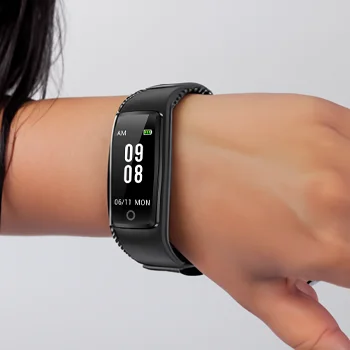
- - Budget-conscious individuals
- - Fitness beginners
Pros and Cons
Pros
- Small and compact design means it shouldn’t get in the way of training
- Supports 14 different types of activities
- Available in cool color combinations
Cons
- Some reports say it might not pick up every type of CrossFit workouts
Who is it for?
Who is it for?
- Fashion-conscious users
- Those wanting a compact design
Who is it not for?
- Users needing comprehensive CrossFit tracking
Final Verdict
The Willful Fitness Watch is stylish and compact, ideal for those who want a sleek device. It may miss some CrossFit movements in its tracking.
During my strength training sessions, I noticed many fellow athletes using this fitness tracker, and I quickly understood why. It would mainly be due to the small and compact design, which is barely noticeable or distracting.
It’s also a cool looking device with multiple color bands available to match up with your workout gear.
And I won’t say who on our team is that fashion conscious.
We did notice that compared to other CrossFit watches, this one didn’t always recognize all the CrossFit moves we were doing.
How We Picked the Best Fitness Trackers For Crossfit
To identify the top 10 fitness trackers for CrossFit, we rigorously tested each product over two months, evaluating their performance in real CrossFit scenarios.
This included:
Durability
Durability is paramount in CrossFit, where rigorous workouts can put equipment to the test. Under the durability test, we specifically subjected each fitness tracker to a series of CrossFit routines including repetitive barbell cycling, kettlebell swings, and wall balls, focusing on their resilience to repeated impact and abrasion resistance.
Through our rigorous trials, we identified those trackers that withstood the rigors of CrossFit without compromising functionality or aesthetics.
Accuracy in Tracking
Accurate tracking is essential for monitoring your progress in CrossFit. For accuracy in tracking, we compared the trackers' data against standard gym equipment readings during activities like rowing and assault bike sessions, measuring their precision in tracking heart rate spikes and calorie expenditure.
Our real-world testing, which involved comparing tracker data to manual measurements, allowed us to pinpoint devices that consistently delivered precise and reliable tracking results.
Weightlifting to HIIT
CrossFit encompasses a wide range of activities, from heavy weightlifting to high-intensity interval training. In the weightlifting to HIIT category, we tested the trackers during a typical CrossFit workout, including a 1RM (one-rep max) deadlift for weightlifting accuracy and a Tabata-style workout for assessing their responsiveness to high-intensity interval training.
We scrutinized how well the trackers adapted to these varying exercise intensities, ensuring they could accurately capture data regardless of the workout type.
Comfort During Intense Workouts
Comfort is non-negotiable during intense CrossFit sessions that push your limits. We wore each fitness tracker for extended periods, including strenuous workouts, to evaluate their wearability.
We considered factors like strap material, breathability, and overall comfort to pinpoint which trackers stayed comfortable throughout demanding workouts without causing discomfort or irritation.
Buyer's Guide for Fitness Trackers For Crossfit
Before buying a CrossFit fitness tracker, look for a device that offers ease of use, ensures comfortable wear during workouts, boasts sufficient battery life, excels in tracking a variety of activities, features GPS functionality, incorporates sleep tracking, and guarantees reliable heart-rate monitoring.
1 - Ease Of Use
We were actually surprised how many of the trackers we tested were really difficult to navigate. It just seems like there are too many companies that don’t put effort into making their software user-friendly.
The problem you end up with is that even a great feature list is completely lost if you cannot get the information quickly in the middle of a gym workout.
And this is even more important for CrossFit. With little time between sets, the high-intensity interval training doesn’t exactly give you the opportunity to click through multiple menus just to see your training data.
2 - Weight And Comfort
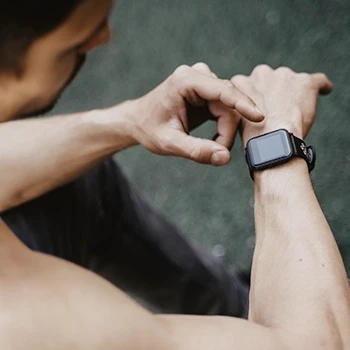
I remember having one of the early heart rate monitors with built-in GPS. I felt soo cool, but after a couple of trips to the gym, I just didn’t like the weight. This doesn’t bother all people. But I found this to be very distracting.
The good news is that technology has advanced a lot, and that has meant that fitness tracking devices have become much smaller, which is great news for people with small wrists.
When you order online to get the best prices, you obviously can’t try the watch on. But we found that there are always people commenting in reviews about how comfortable they are to wear.
3 - Battery Lifespan And Charging Time
When it comes to long battery operation, you have to look past the headline advertising info. There’s not a single fitness watch out there that would admit it doesn’t last long on each charging cycle. A good range is about five days, but some of the fitness watches out there could be as low as a day.
Some of the best fitness tracking devices we found and listed in the top positions could last up to 14 days, which is damn good. But it’s also important to look at the charging time.
When you’re tracking your recovery and sleep as well, you don't want to lose the data you could be collecting because the watch is charging all night.
Ideally, you’d want to be able to fast charge in about 30 to 60 minutes.
4 - Types Of Activity
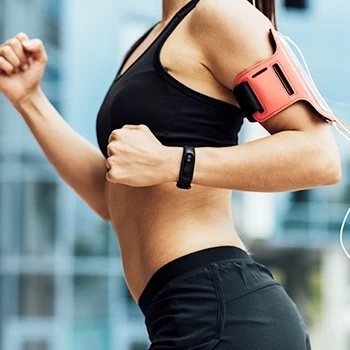
When fitness tracker products first came out, the features they provided were simple step counting. Some were able to tell the difference between walking and running, but that was about it.
Today, technical features have become a lot more advanced, and motion tracking sensors should be able to tell the difference between running, swimming, and interval training. And it all depends on the number of data entries a tracker has.
The fitness tracker device for CrossFit that we recommend above has a minimum of 15 different types of activity pre-programmed. Some of them go above 90, which may be suitable for serious CrossFit enthusiasts.
5 - Custom Routines
Not everyone can afford to join a gym, fitness club, or hire a fitness coach. But you could still get some good digital training advice from some of the more advanced fitness tracker brands for CrossFit.
Several apps come with fitness trackers that work out your current performance, and then recommend specific workouts to get you to your goals.
Alternatively, they allow you to pre-program your gym routine so that you don’t need to try and take notes on a piece of paper, whether you're doing strength training, interval training, cardio, or flexibility.
These are some advanced features, but they might just push the right buttons for the tech-geeks reading this.
6 - Heart Rate Monitoring
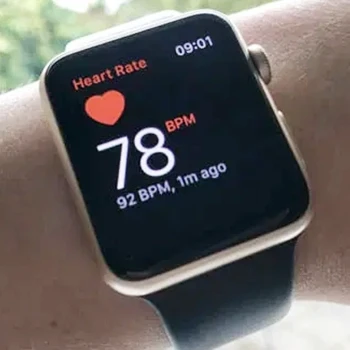
The earliest fitness tracker products I used with professional athletes were HR monitors. These tell you your heart rate in real-time, indicating how hard you might be pushing your body.
I won’t go into the details of the different HR activity zones, but this is how professionals can adjust their performance levels to a precise training plan. Using a chest strap is still common and seems to be the most accurate way to measure [2].
“Heart-rate training prevents you from running too hard on your easy or recovery runs, reducing the risk of fatigue and overtraining; it also helps you to recover.”
- Heather Mayer Irvine, Sports & Fitness Writer
7 - GPS
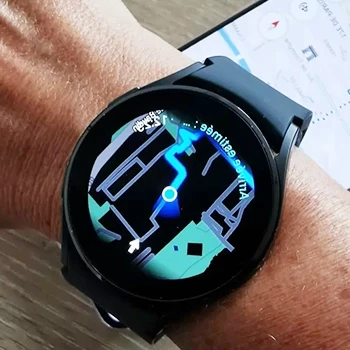
A fitness tracking device with GPS sounds like a pure gadget geeks dream. And I’d have to admit that location tracking won’t be important in a CrossFit gym or for simply tracking calories burned.
But if you tend to go running or cycling, and don’t like to carry a bulky phone or other devices, then why not let your watch track your distance and pace.
Imagine having a set running time or distance and seeing how fast your pace has changed as your fitness levels improved.
8 - Water Resistance
It’s important to understand what water resistance and waterproof actually mean. All gadgets usually come with certifications that say they could withstand water splashes or use underwater. Some certifications will say you could use it for diving up to 100 feet or more.
“Every single phone, watch, sport band, GPS device, portable speaker, or the like that bills itself as “waterproof” should really bill itself as “Water-resistant within the parameters specified by the manufacturer.”
- Jason Fitzpatrick, Editor in Chief of LifeSavvy
That’s great if you go swimming a lot, but it might not be an expense you need for CrossFit. But, if you’re doing CrossFit right, then you should be getting to the end of a training session and be completely drenched in sweat.
Some of that sweat will splash onto your activity tracker. That’s why it should be at least splash-proof so that you don’t end up frying it after one trip to the gym.
9 - Recovery And Sleep Tracking
A lot of people just think of advanced sleep monitoring as timing the amount of time you’re in bed at night. But it’s just as much about sleep quality, which could be a much better indicator of how well your body might recover from high-intensity workouts.
“For adults, good quality sleep means that you typically fall asleep in 30 minutes or less, sleep soundly through the night with no more than one awakening, and drift back to sleep within 20 minutes if you do wake up.”
- National Sleep Foundation
This is something that some of the advanced gadgets we recommend will do pretty well. By wearing your fitness tracking device to bed, it may be able to monitor your sleep cycles and determine how much rest you got.
This information could be valuable to figure out how much you might want to push yourself the next day [3,4].
10 - Connectivity With Smartphones
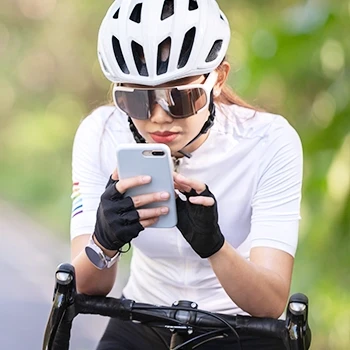
Most of the activity tracker recommendations above are compatible with apps on different mobile platforms. The main exception is the Apple Watch.
There simply isn’t any way to sync it up with an app on an Android phone, but that might not be a problem if you’re one of the millions of iPhone lovers.
But, if you tend to switch between different platforms and prefer the flexibility of connecting to various apps, then it’s best to stick with a device that has apps for all platforms.
Having this flexible connectivity ensures you stay on track with your CrossFit routines and achieve your intended goals—both short and long run.
FAQs
Do Crossfit Athletes Wear Fitness Watches?
Yes, CrossFit athletes wear fitness watches to keep track of their interval timing and activity. With some of the advanced activity trackers, you could get detailed data about your performance in each session.
Does Apple Watch Track CrossFit?
Yes, the Apple Watch can track CrossFit workouts if you set it up with the right apps. Because CrossFit training involves so many different disciplines and movements, it may become challenging to accurately summarize the data.
Does a Heart Rate Monitor Help With Crossfit?
Yes, a heart rate monitor may help with CrossFit training because it allows you to target the correct intensity levels. Remember, though, that a chest strap might get in the way or become uncomfortable. It’s better to use a watch or strap on your arm.
Our Verdict On The Best Fitness Tracker For Crossfit
This took quite a long debate as we got things filtered down to two best fitness watches, with insights from Total Shape’s experts helping us narrow down the top contenders.
Ultimately, it came down to compatibility and battery time.
For us, the winner is the Garmin Fenix 6. With up to 14 days of battery operation and an impressive range of features, this could be the right fitness tracking device to get the most out of your CrossFit sessions. It truly is one of the best trackers in the market.
Order yours today, and then let us know which features you like the most.
At Total Shape, we’re here to help you find the best fitness trackers to boost your workouts. Explore our expert guides and join the Total Shape community to take your fitness tracking to the next level!
Our #1 Recommendation
Garmin Fenix 6 (Best Overall & Battery Life)

Rated With Total Shape's Scoring System
- Up to 14 days battery lifespan per charge in smartwatch mode
- Comes with a good selection of bands
- Advanced wrist heart rate monitoring
- View training metrics to see how your fitness is improving
- Watch face might be a bit large for very slim wrists
About The Author
You May Also Like

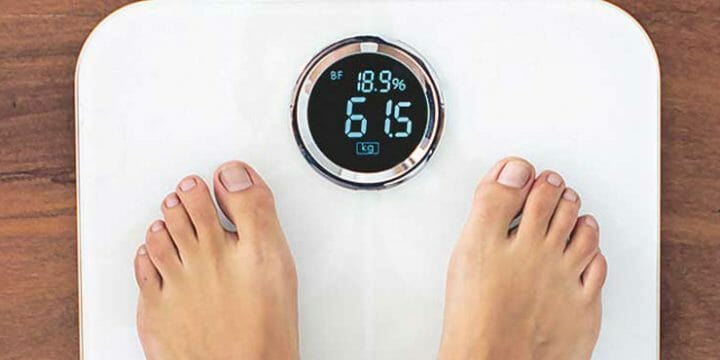

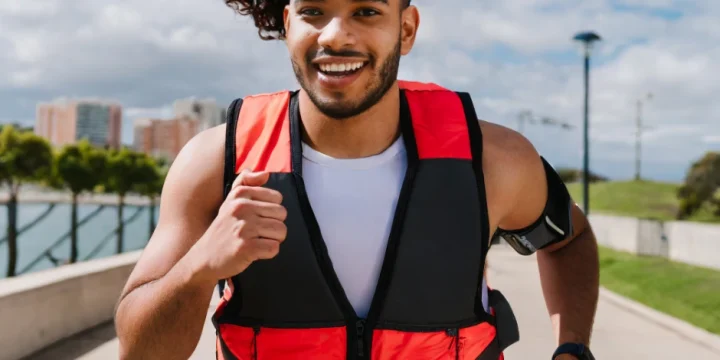
Crazy how much improvement the best fitness tracker for CrossFit has made since 2017!
FitBit for CrossFit is the one that works for me, no doubt about that!
When you’re pushing yourself in CrossFit, tracking progress is essential. These fitness trackers seem to cover all the bases, from heart rate monitoring to recovery data, which can really optimize your training session
Finding a tracker that actually survives a CrossFit session is tough. Glad this list focuses on durability and features like heart rate during HIIT.